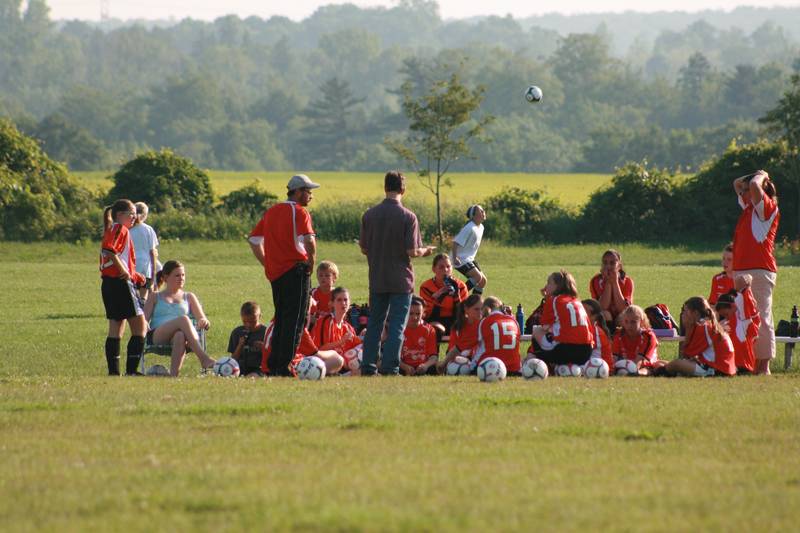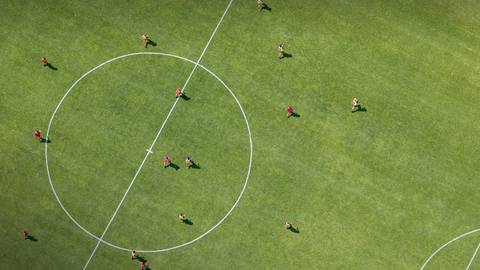U13 football represents a crucial developmental stage for young players across the United Kingdom. At this age, children aged 12-13 are beginning to grasp more complex tactical concepts while refining their technical abilities on the pitch. Youth club football at U13 level is centred on taking responsibility and developing a deeper knowledge of the game, preparing players for more competitive environments as they progress.
The transition from mini-football to 11-a-side matches marks an important milestone for these young athletes. Coaches focus on nurturing both individual skills and team dynamics, with training sessions designed to challenge players physically and mentally. Many grassroots clubs across the UK offer dedicated U13 programmes that balance competitive play with enjoyable learning experiences.
This age group serves as an essential bridge between foundational learning and more advanced football concepts. While some countries like the United States might refer to the sport as soccer, in the UK, U13 football programmes emphasise tactical awareness, positional understanding, and technical proficiency. These formative years often determine which players will continue to develop into more serious competitors at the U14 level and beyond.
Understanding U13 Football
U13 football represents a crucial developmental stage where young players transition to more advanced tactical concepts and physical demands. Age eligibility is typically determined by whether players were under 13 years old before 1st January of the current year.
Fundamentals of U13 Soccer
U13 football often marks the transition from 9-a-side to 11-a-side format, introducing players to the full pitch experience. This shift requires coaches to focus on positional awareness and tactical understanding across larger playing areas.
Training sessions should emphasise defensive pressing as a unit, possession-based play, and organised transitions. These concepts help young footballers develop their game intelligence while building technical skills.
Players at this age begin taking more responsibility on the pitch and developing deeper knowledge of the game. Coaches should implement drills that encourage one-touch passing, pressing, and maintaining possession across different zones of the pitch.
Physical development varies significantly at this age, requiring training approaches that accommodate different growth stages. Short, focused drills with clear objectives work best for maintaining engagement.
Tournaments and Competitions
U13 tournaments offer valuable competitive experiences for developing players. These events typically feature group stages followed by knockout rounds, allowing teams to play multiple matches and test themselves against varied opposition.
Local leagues run weekly fixtures throughout the season, usually following school term dates. These competitions provide consistent match experience and help track progress over time.
County cup competitions introduce higher stakes football, creating pressure scenarios that build mental resilience. Many clubs use these tournaments to identify talent and prepare players for more competitive environments.
Tournament formats vary, with some emphasising development through guaranteed minimum game time regardless of results. Others follow traditional elimination structures to simulate professional competition.
When selecting tournaments, coaches should consider the standard of opposition, travel distance, and whether the format aligns with their development philosophy. Quality competition is essential for player growth at this critical age.
Maximizing Performance and Participation
Developing young footballers at the U13 level requires a delicate balance between building technical skills and maintaining enthusiasm for the sport. Proper training approaches and inclusive environments lay the foundation for long-term athlete development.
Training Techniques for U13 Players
Research indicates that effective U13 training sessions should include a balanced structure of playing forms (33.4%) and training forms (29.5%), with appropriate rest periods. This age represents a critical developmental window where fundamental techniques become refined and tactical understanding deepens.
Small-sided games (4v4 or 5v5) provide excellent opportunities for players to experience more ball contacts while developing decision-making skills in match-like scenarios. These formats naturally increase intensity without overwhelming young athletes.
Incorporate varied training methods focusing on:
- Technical skills (passing, receiving, dribbling)
- Basic tactical concepts (positional awareness, team shape)
- Foundational strength and coordination exercises
- Game-based learning activities
Physical development should emphasise proper movement patterns rather than heavy resistance training. Well-structured sessions lasting 60-75 minutes typically yield optimal engagement without fatigue-related drop-offs in performance.
Encouraging Fair Play and Inclusivity
Equal playing time represents one of the most significant challenges for grassroots coaches. Professional academy coaches increasingly recognise that match experience is crucial for all squad members, not just the most talented players.
Creating a positive environment where mistakes are viewed as learning opportunities rather than failures helps reduce performance anxiety. This approach encourages greater risk-taking and creativity on the pitch.
Rotate positions regularly to develop well-rounded footballers who understand different roles within the team. This practice prevents early specialisation and broadens players' tactical understanding.
Establish clear team values that prioritise effort, respect and sportsmanship over winning at all costs. Recognition systems that highlight improvement rather than just match results can motivate players across all ability levels.
Regular feedback sessions should focus on specific actionable points rather than general praise or criticism. This helps players develop self-awareness and ownership of their development journey.
Marketing and Advertising within U13 Football
Marketing and promotion play a significant role in youth football development, helping teams attract players, secure funding, and build community support. Effective advertising strategies can elevate a club's profile while appropriate partnerships can provide essential resources.
Understanding Targeted Advertising
Youth football clubs can benefit tremendously from targeted advertising approaches that reach relevant audiences. Social media platforms offer cost-effective ways to promote teams through regular posts showcasing training sessions, match highlights, and player achievements.
Most U13 teams find success by focusing advertising efforts on local primary schools, community centres, and family-oriented venues. Digital advertising through necessary cookies and tracking helps clubs understand which traffic sources bring the most interest, allowing for optimised spending on promotional activities.
Facebook and Instagram have proven particularly effective for reaching parents of potential players, while platforms like TikTok can engage young players directly. Many successful clubs create dedicated content calendars featuring match announcements, training tips and registration information.
Collaborations with Advertising Partners
Local businesses often make ideal advertising partners for U13 football clubs, providing sponsorship in exchange for brand visibility on kits, training equipment or pitch-side banners. These mutually beneficial relationships help reduce costs for families while increasing community engagement.
Kit sponsorships remain the most visible and sought-after partnership opportunity, with local companies typically paying £300-£1,000 annually to support youth teams. Other valuable collaborations include equipment providers, sports facilities and catering services.
When seeking partners, clubs should prepare professional sponsorship packages outlining benefits, exposure opportunities and the club's values. Partners appreciate clear data on community reach and engagement metrics.
Many successful U13 teams in the UK collaborate with sporting goods retailers, offering members discounts while the partner gains loyal customers. These arrangements work best when values align between the club and business partner.
Show less











